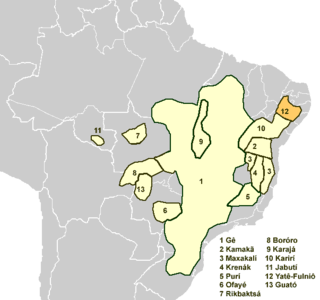Ia–tê_languages
Fulniô language
Indigenous language of Brazil
Fulniô, or Yatê, is a language isolate of Brazil, and the only indigenous language remaining in the northeastern part of that country. The two dialects, Fulniô and Yatê, are very close. The Fulniô dialect is used primarily during a three-month religious retreat. Today, the language is spoken in Águas Belas, Pernambuco.[2]
You can help expand this article with text translated from the corresponding article in Portuguese. (April 2021) Click [show] for important translation instructions.
|
The language is also called Carnijó, and alternate spellings are Fornió, Furniô, Yahthe, and Iatê.
